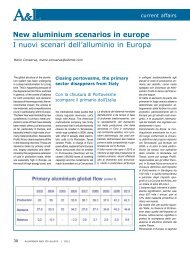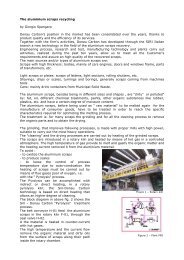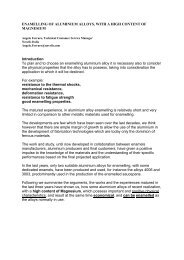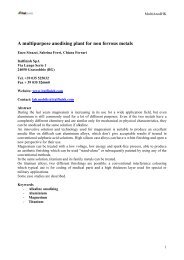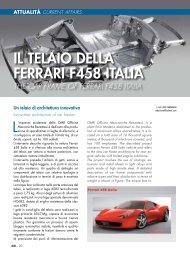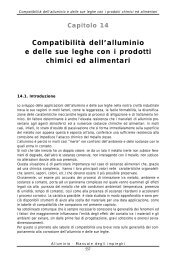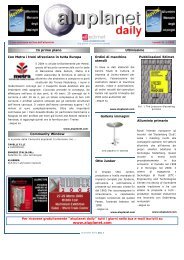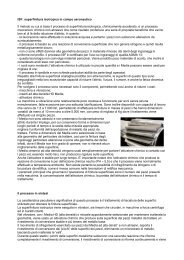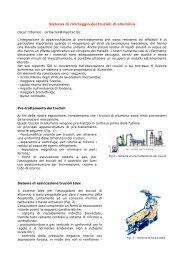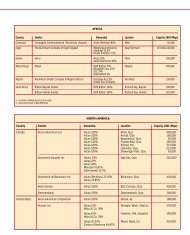ECOLOGICAL PREPAINT TREATMENT OF ALUMINIUM ... - Aluplanet
ECOLOGICAL PREPAINT TREATMENT OF ALUMINIUM ... - Aluplanet
ECOLOGICAL PREPAINT TREATMENT OF ALUMINIUM ... - Aluplanet
You also want an ePaper? Increase the reach of your titles
YUMPU automatically turns print PDFs into web optimized ePapers that Google loves.
friendly chemical technologies is one of the significant factors driving these new treatment<br />
methods.<br />
BioChemical Cleaning<br />
A new advance in aqueous alkaline cleaning has been achieved through the combination of<br />
latest generation inorganic and organic chemical compounds in synergy with biotechnology.<br />
Applicators would like to reduce their energy consumption, so it would be desirable to have<br />
lower temperature operating cleaners. This has been realised by the use and optimisation of<br />
increased surfactant combinations with highly active dispersants. These new formulations<br />
displace and emulsify surface soils at lower operating temperatures. At the same time there is<br />
a need for longer life of process solutions. Through the process of bioremediation, complex<br />
organic molecules such as oils, are converted into less complex, non-hazardous substances<br />
such as carbon and water. This means that a wide range of oils and soils will be consumed<br />
and eliminated from the working solution.<br />
The latest generation BioChemical cleaners utilise microbes found in nature which have been<br />
selected for their benefits to humans. They play a fundamental role in the transformation of<br />
matter in various fields and are increasingly found in industrial applications. Extensively used<br />
in the production of foods and beverages, their use has grown considerably in the chemical<br />
and pharmaceutical industries as well as modern waste water treatment plants.<br />
Under aerobic conditions, biodegradation of organic compounds will naturally occur and an<br />
effective degradation of matter can be achieved, as illustrated in slide 5. The interaction of an<br />
active biomass over time with larger organic molecules results in the formation of many<br />
smaller molecules and increased biomass. This process known as Bioremediation enables<br />
the continual repetition of this reaction on prolonged contact, creating smaller organic<br />
molecules some of which will be broken down many times an be transformed into more<br />
nicrobes, small amounts of carbon dioxide and water. This ability to continue reacting over<br />
time is one of the unique benefits from biotechnology. This approach is now successfully used<br />
in a number of industrial applications such as paint pretreatment, paint overspray treatment<br />
and waste treatment.<br />
BioChemical cleaning<br />
Latest generation chemistry<br />
Aerobic microbes<br />
Bioremediation<br />
TIME<br />
CO 2<br />
Water<br />
Oil at<br />
surface<br />
Oil, Water<br />
Surfactant<br />
Emulsion<br />
BIOMASS<br />
Surfactant<br />
Slide 5: illustration of the bioremediation process<br />
The combination of latest cleaning chemistry and biotechnology ensures consistent<br />
performance, optimum process efficiency and exceptionally long solution working life. This<br />
avoids the need for regular solution dumps, conserving both chemistry and water, whilst<br />
drastically reducing waste disposal needs. Further improvements can be achieved when<br />
BioChemical cleaners are combined with dedicated filtration equipment. This synergy



